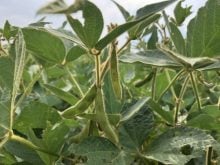MarketsFarm — The ICE Futures canola market saw some wide price swings over the week ended Wednesday, dropping by more than $50 per tonne off its contract highs in the nearby May contract before recovering to trade just a few dollars off of those levels once again.
Tight canola supplies, strength in world vegetable oil markets, and firm basis levels in Western Canada remain the underlying supportive features in canola, according to Jamie Wilton of RJ O’Brien in Winnipeg.
The biggest question in the market now, according to Wilton, is ‘When will the crushers be full and no longer needing to buy old-crop canola?’
Read Also

U.S. grains: CBOT soybeans, corn, wheat fall in USDA data aftermath
Chicago grains took a dive on Friday, following a closely watched U.S. government crop report and the release of export data that could provide clues into Chinese buying.
Rumours were circulating the market during the week that some crushers had bought canola from Ukraine for delivery before Canada’s new crop is available, but confirmation was lacking.
With or without imports, Canada’s canola supplies are expected to be tight into the 2021-22 crop year, which should limit the downside for new-crop contracts and make weather conditions through the growing season an important factor to follow.
The U.S. Department of Agriculture releases acreage estimates on March 31 that could sway the futures if there are any surprises, Keith Ferley of RBC Dominion Securities added.
Canada’s own official acreage estimates from Statistics Canada won’t be out until the end of April, but the planted area might not increase that much on the year.
While canola prices are trading near record-high levels, many other crops also pencil out favourably for farmers this year.
Canola is an expensive crop to grow and it is also very dry across the Prairies. Ferley noted new-crop prices look relatively cheap if the dryness persists and if acres end up steady or only up slightly on the year.
— Phil Franz-Warkentin reports for MarketsFarm from Winnipeg.















